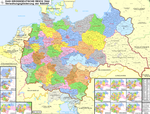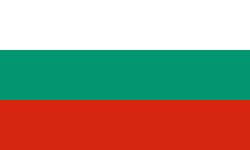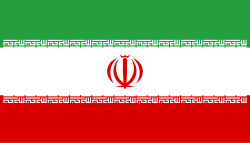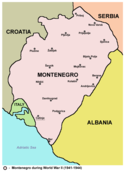Axelmakterna

Axelmakterna (tyska: Achsenmächte) avser de stater som under andra världskriget stred mot de allierade. Begreppet axelmakterna skapades den 1 november 1936 då Mussolini i ett tal nämnde den nya "Rom–Berlin-axeln", för att beskriva det närmande mellan Italien och Tyskland som skett i samband med utbrottet av andra italiensk-abessinska kriget och på sommaren 1936 tydligare i och med spanska inbördeskrigets utbrott och Galeazzo Cianos besök i Berlin oktober 1936 för undertecknande av ett vänskapsfördrag. Mussolini beskrev den som "en vertikallinje mellan Berlin och Rom, som icke var en skiljelinje, utan en axel, kring vilken alla europeiska stater kunde samlas, som önskade fred och samarbete".[1]
Uttrycket kom att bli populärt i tysk och italiensk press och förkortades ofta till bara axeln eller axelmakterna.[1]
Senare samma månad bildades Antikominternpakten där även Japan ingick. Tyskland och Italien undertecknade Stålpakten 1939. År 1940 anslöt sig Japan genom Tremaktspakten och dessa tre stater kom själva att beteckna alliansen för "Axeln Rom-Berlin-Tokyo". Axelmakterna, som geografiskt nådde sin största utbredning 1942, dominerade stora delar av världen, men besegrades av de allierade i slutet av andra världskriget. Under andra världskrigets gång var det många länder som både anslöt sig till och lämnade axelmakterna. Italien bytte sida i slutet av kriget.
Deltagande nationer
Främre axelmakter
![]() Tyskland, under Führer Adolf Hitler.
Tyskland, under Führer Adolf Hitler.
![]() Japan, under premiärminister Hideki Tojo samt kejsar Hirohito.
Japan, under premiärminister Hideki Tojo samt kejsar Hirohito.
![]() Italien, (1940-1943), under premiärminister Benito Mussolini och kung Viktor Emanuel III.
Italien, (1940-1943), under premiärminister Benito Mussolini och kung Viktor Emanuel III.
Mindre axelmakter
![]() Ungern (1940-1945), under Miklós Horthy och senare Ferenc Szálasi.
Ungern (1940-1945), under Miklós Horthy och senare Ferenc Szálasi.
![]() Rumänien (1941-1944), under Ion Antonescu.
Rumänien (1941-1944), under Ion Antonescu.
![]() Bulgarien (1941-1944), under tsar Boris III av Bulgarien.
Bulgarien (1941-1944), under tsar Boris III av Bulgarien.
![]() Thailand (1941-1945), under Luang Phibul Songkhram.
Thailand (1941-1945), under Luang Phibul Songkhram.
Ungern
Länder i koalition med axelmakterna
![]() Finland, (1941-1944), (se Ryti-Ribbentrop-avtalet), under president Risto Ryti och överbefälhavaren Gustaf Mannerheim.
Finland, (1941-1944), (se Ryti-Ribbentrop-avtalet), under president Risto Ryti och överbefälhavaren Gustaf Mannerheim.
![]() Irak, (1941), under Rashid Ali.
Irak, (1941), under Rashid Ali.
![]() Iran, (1941), under Reza Shah.
Iran, (1941), under Reza Shah.
Länder under axelmakt-styrd marionettregering[källa behövs]
![]() Manchukuo (1932–1945), under kejsar Puyi.
Manchukuo (1932–1945), under kejsar Puyi.
![]() Slovakiska republiken (1939–1945), under Jozef Tiso.
Slovakiska republiken (1939–1945), under Jozef Tiso.
![]() Albanien (1943–1944).
Albanien (1943–1944).
![]() Kroatien (1941–1945), under Ante Pavelić.
Kroatien (1941–1945), under Ante Pavelić.
![]() Andra filippinska republiken (1943–1945), under José P. Laurel.
Andra filippinska republiken (1943–1945), under José P. Laurel.
Se även
- Centralmakterna
- Molotov–Ribbentrop-pakten
- Ondskans axelmakter
- Japan under andra världskriget
- Italien under andra världskriget
- Tremaktspakten
Referenser
- ^ [a b] ”Svensk uppslagsbok, Axelmakterna”. Arkiverad från originalet den 8 augusti 2014. https://web.archive.org/web/20140808064122/http://svenskuppslagsbok.se/scans/band_unknown_01/0985_0986-0077.jpg. Läst 27 mars 2017.
| ||||||||||||||||||||||||||||||||||||||||||||||||||||||||||||||
Media som används på denna webbplats
National flag and merchant ensign of Germany from 1935 to 1945.
Författare/Upphovsman: F l a n k e r, Licens: CC BY-SA 2.5
Flag of the Kingdom of Sardinia (1851-1861) and of the Kingdom of Italy (1861-1946). Use: Civil flag and ensign. In a governmental or a military context, the crowned version (see Crowned version) was always used (as State flag and naval ensign).
The national flag of Kingdom of Thailand; there are total of 3 colours:
- Red represents the blood spilt to protect Thailand’s independence and often more simply described as representing the nation.
- White represents the religion of Buddhism, the predominant religion of the nation
- Blue represents the monarchy of the nation, which is recognised as the centre of Thai hearts.
Flag of Iran. The tricolor flag was introduced in 1906, but after the Islamic Revolution of 1979 the Arabic words 'Allahu akbar' ('God is great'), written in the Kufic script of the Qur'an and repeated 22 times, were added to the red and green strips where they border the white central strip and in the middle is the emblem of Iran (which is a stylized Persian alphabet of the Arabic word Allah ("God")).
The official ISIRI standard (translation at FotW) gives two slightly different methods of construction for the flag: a compass-and-straightedge construction used for File:Flag of Iran (official).svg, and a "simplified" construction sheet with rational numbers used for this file.
historic map of Slovak Republic (1939-1945)
Författare/Upphovsman: Пакко, Licens: CC BY-SA 3.0
Map of Bulgaria during WWII

Historic map of Romania in 1941.
Hungary in 1920 and in 1941.
Författare/Upphovsman: Kendrikdirksen, Licens: CC BY-SA 3.0
Area of Japanese puppet states during WW2 (Great East-Asian Co-prosperity sphere)
Flag of Hungary from 6 November 1915 to 29 November 1918 and from August 1919 until mid/late 1946.
Författare/Upphovsman: Original: historicair Vektor: TastyCakes, Licens: CC BY-SA 3.0
The Empire of Japan at its height in 1942.
Författare/Upphovsman: San Jose, Licens: CC BY-SA 3.0
Second world war europe 1940, map de
The flag of the Independent State of Croatia
Depiction of the flag of the Philippines, as conceived by Gen. Emilio Aguinaldo. Created with Inkscape.
Flag of Manchukuo
Författare/Upphovsman: Bennet Schulte, Licens: CC BY-SA 3.0 de
Map of the administrative division of the Greater German Reich (»Großdeutsches Reich«/»Großdeutschland«/"Greater German Empire"/"Greater Germany") by the NSDAP (Nazi Party) 1944, showing Kreise, Gaue and Reichsgaue. In addition, the states, the territories of the Reichsstatthalter and the legal status of Reich territories. Additionally postal codes, license plates, military districts, higher regional courts, State Police offices, railway directorates, Supreme construction management of the highways and work coordination areas 1944.
Författare/Upphovsman: PANONIAN, Licens: CC0
Map of Independent State of Croatia (as of 1941).
The flag of the First Slovak Republic from 1939-1945.
Författare/Upphovsman: Gigillo83, Licens: CC BY 3.0
map of the Kingdom of Italy (Regno d'Italia) in 1942 with provinces.
Författare/Upphovsman: SeNeKa, Licens: CC BY-SA 3.0
Flag in use in Albania under German occupation (1943-1944)
Författare/Upphovsman: F l a n k e r, Licens: CC BY-SA 2.5
Flag of the Kingdom of Sardinia (1851-1861) and of the Kingdom of Italy (1861-1946). Use: Civil flag and ensign. In a governmental or a military context, the crowned version (see Crowned version) was always used (as State flag and naval ensign).




































